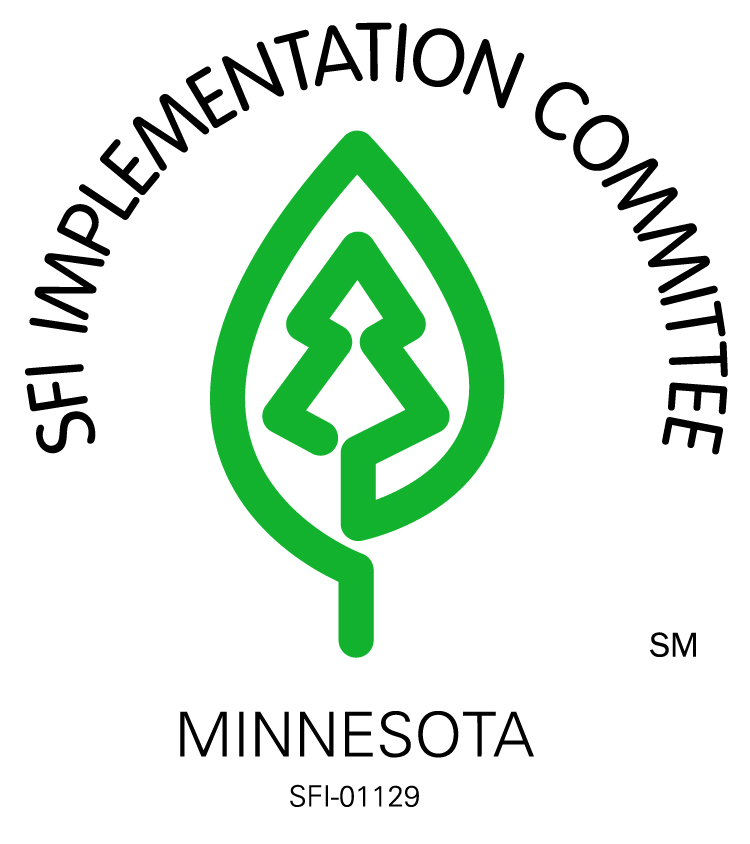MINNESOTA SIC & MINNESOTA FOREST INDUSTRIES
Working with Youth to Provide Healthy Forest Bat Habitat in Minnesota Forests
Boy Scouts and Partners Build and Erect Over 100 Bat Roost Boxes
Why this Project Matters
The maternal bat roosting boxes produced by this project are designed to increase bat populations in Minnesota. The state is home to eight species of bats, one of which, the northern long-eared bat, is protected by the Federal Endangered Species Act. Two others, the little brown bat and the tri-colored bat, are being considered for protection. The Minnesota Department of Natural Resources also reports a substantial decline in the number of bats in Minnesota. The decline is largely because of white-nose syndrome, a disease that is harmful and usually fatal to hibernating bats. This project will educate Boy Scouts and the public about the role of sustainable forestry in bat health and conservation.
How the Project Helps Boost Bat Populations
Bats roost in caves, built structures, natural crevices in rocks, and in trees. Bat roost boxes are like bird nesting boxes. Providing bat boxes is a widely used intervention for conservation and for research. Bat boxes are easy for landowners to install and provide bats with alternative roost sites in areas where roost sites are limited.
The bat boxes will be made from SFI-certified wood donated by Norbord Inc. and sourced from SFI certified Minnesota state forests. Bat Conservation International is providing the design and educational materials describing white-nose syndrome and its impact on bat populations. These will be made available to the Scouts as they assemble kits and erect boxes. In addition, the Minnesota SFI Implementation Committee Coordinator is a certified wildlife biologist. He will make a presentation to the Scouts on the role that sustainable forest management can play in bat conservation.
How the Project Helps Forest Managers
As primary predators of night-flying insects, bats play an essential role in maintaining forest health. Bats can eat nearly their own body weight in insects each night. These include moths, beetles and other destructive pests. Although long neglected in forest-management planning, bats are essential to the health of forest ecosystems, fulfilling the same roles by night that birds do by day. Helping bats is a wise investment in America’s forests.
SFI’s Contribution
The SFI Community Grant Program is supporting this project. This project engages both local and international partners to address a national conservation challenge. The signage, messaging and external communications will all build a greater understanding of the role of forests and trees in our daily lives. The bat boxes will be built from sustainably sourced and SFI Chain-of-Custody certified tamarack. Each will have an educational sign on the impacts of invasive white-nose syndrome on bats, and how sustainable forest management can provide bat habitat through practices like leaving dead and dying trees for bats to roost in.
Partners
This partnership includes conservationists, researchers, and SFI certified organizations.
- Project leads: Minnesota SFI Implementation Committee and Minnesota Forest Industries
- Sustainable Forestry Initiative
- Louisiana Pacific (SFI‑certified organization)
- Boy Scouts of America Voyageurs Area Council (SFI‑certified organization)
- Minnesota Power
- Norbord, Inc. (SFI‑certified organization)
- Bat Conservation International
Related Information
Bat Hibernacula Inventory and Protection in the Thompson, Okanagan, Boundary

Minnesota SFI Implementation Committee and Minnesota Forest Industries
The SFI program responds to local needs and issues across North America through 34 SFI Implementation Committees at the state, provincial or regional level. This unique grassroots network involves private landowners, independent loggers, forestry professionals, local governments agencies, academics, scientists, and conservationists. The Minnesota SFI Implementation Committee includes representatives from the Minnesota Department of Natural Resources, forest companies, the University of Minnesota, family forest owners, the Minnesota Logger Education Program, Minnesota Timber Producers Association, the Ruffed Grouse Society and SFI-certified county land departments. Minnesota Forest Industries is an association representing 12 state forest sector companies.
Share
COPY LINK: https://forests.org/grant-minnesota-sic-and-minnesota-forest-industries-forest-bat-habitat/